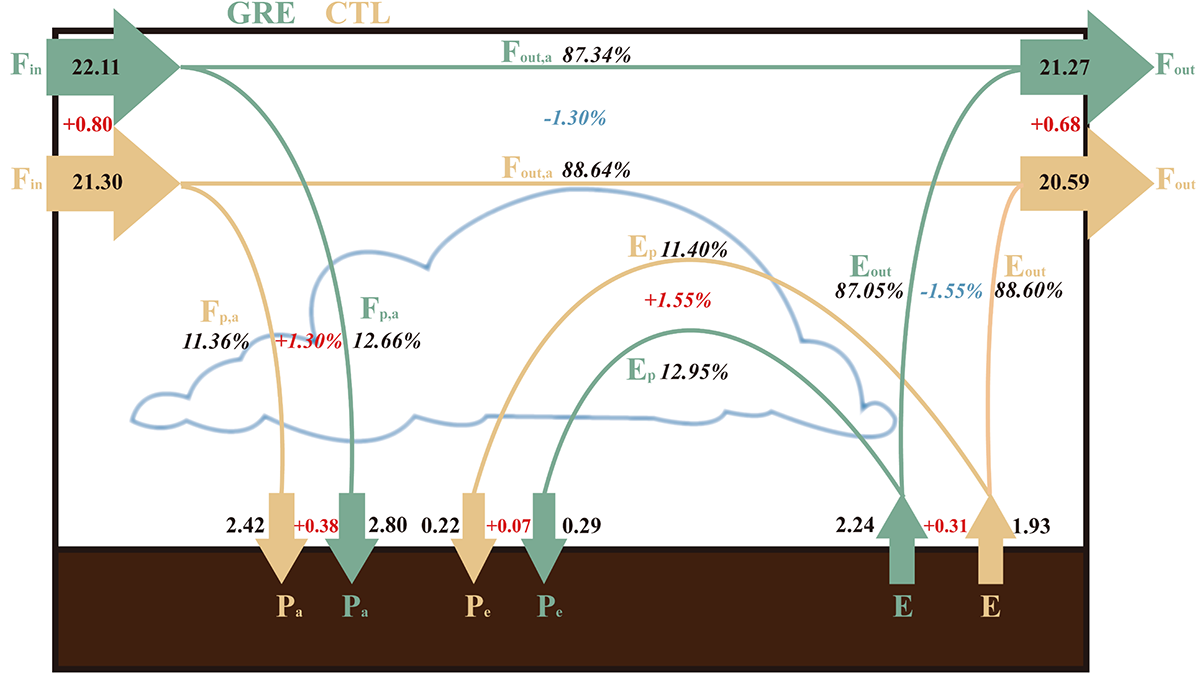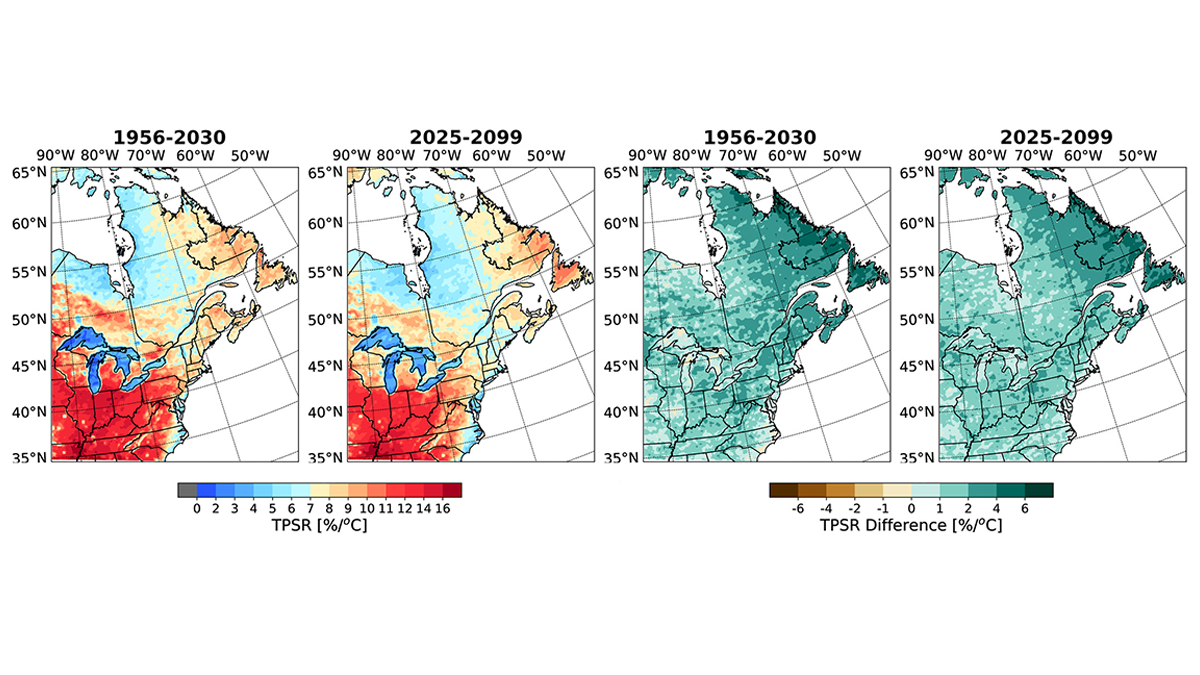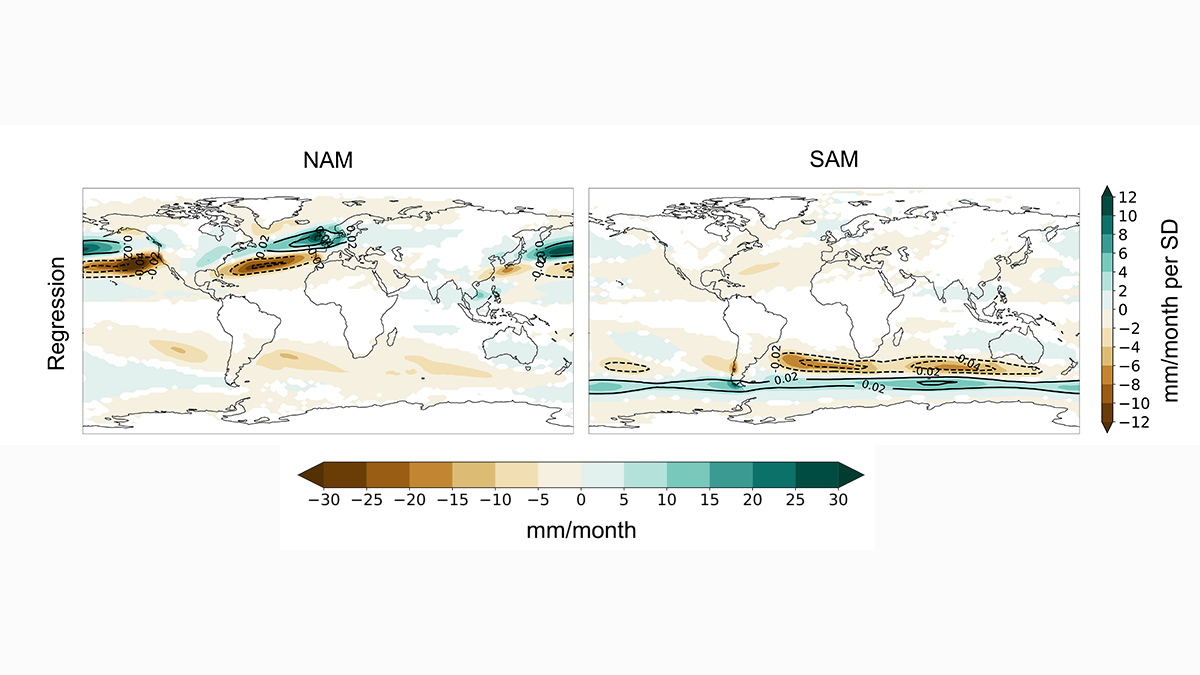Warming temperatures and less rain are causing flash droughts to develop more quickly and strike more often.
precipitation
A New Look at the Changing Water Cycle Over Land
Whether warming increases or decreases, rain over land depends on the relationship of soil moisture, evaporation, and aridity which shape rain regimes.
Greening of Loess Plateau Increases Water Yield
Vegetation restoration over the Chinese Loess Plateau can enhance atmospheric moisture convergence, increasing the precipitation enough to compensate for the vegetation water consumption.
Landfall Temperature of Atmospheric Rivers on the US West Coast
Atmospheric rivers that start in warm areas of the North Pacific generally stay warm, leading to warmer landfall temperatures in the western United States.
Rate of Temperature–Precipitation Scaling in Rainfall Events
Future extreme rain will be embedded in shorter, more convective dominant rainfall events in the northeastern region of North America, leading to larger rate in future temperature-precipitation scaling.
How Do Atmospheric Rivers Respond to Extratropical Variability?
Atmospheric river variability over the last millennium is primarily driven by north-south displacements in zonal winds induced by the annular modes.
Streamflow Drought Intensification in the European Alps
A five-decade analysis of drought generation processes in the Alps shows their changing seasonality in high-elevation basins with increasingly frequent droughts caused by a lack of snowmelt water.
Global Models Underestimated Groundwater Recharge and Discharge
A new estimate for global groundwater recharge by rainfall and snowmelt, which dictates the upper limit of sustainable groundwater use, doubles the previous estimates from global models.
Salt Spray May Stifle Lightning over the Sea
New research suggests that sea-salt aerosols seed large raindrops that starve clouds of water needed to make lightning. But not all scientists are convinced it’s simply about salt spray.
Fantastic Ice-Nucleating Particles and How to Find Them
Recent advances in measurements and models are paving the way to transform fundamental understanding and simulation of ice-nucleating particles and their climate impacts.










